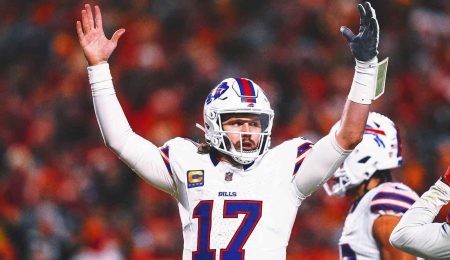Scott Dixon’s Communication Woes
Bob Pockrass, a seasoned motorsports insider for FOX Sports, reported on the opening round of the INDYCAR season in St. Petersburg, Florida, where six-time series champion Scott Dixon faced an unexpected challenge. Dixon’s radio communication with his crew malfunctioned during the race, leading to a series of strategic missteps that he believes cost him the win. Imagine a quarterback on the football field or a basketball player on the court, unable to hear their teammates or coaches. That’s the situation Dixon found himself in on the 1.8-mile street course.
The Impact of the Communication Failure
During the race, Dixon’s teammate and two-time defending series champion Alex Palou took the checkered flag, leaving Dixon to reflect on what might have been. Dixon, known for his tactical acumen and precision, felt that the communication issue was the critical factor that led to his not winning. "You know when the car is going to run out," Dixon explained. "I didn’t know if they could hear me, so I was just telling them I’m just going to run to the light and see what happens." This uncertainty forced Dixon to make decisions without the crucial information his crew would normally provide, such as optimal pit stop timing.
Team Owner’s Perspective
Chip Ganassi, the team owner, echoed Dixon’s sentiments. "If everything was 100 percent, he would have won," Ganassi said. "It was simple. He would have won the race. The race was over. It was one stop to go, and we pitted a lap later than we wanted him to." This one-lap difference was the decisive factor between Dixon and Palou, highlighting the razor-thin margins in high-stakes motorsports.
Official Rules and INDYCAR’s Stance
INDYCAR’s official rules mandate that "During all on-track events, radio communication between the driver and the entrant’s pit box is required at all times." INDYCAR’s audio track recorded two-way communications during the race, which means Dixon was not penalized for the communication issues. Ganassi noted that the radio system worked intermittently, functioning well during the warm-up laps but deteriorating as the race progressed. The team’s inability to communicate consistently with Dixon did not raise safety concerns, but it significantly impacted their race strategy.
Strategic Challenges and On-Track Dynamics
Dixon’s difficulties extended beyond just the pit stop timing. He also faced issues when lapping slower cars, such as Alexander Rossi and Christian Lundgaard. "I kept trying to ask how many laps have they got to go before we can get some clean air and kind of push because it’s very tough to just get a pass going here," Dixon said. Without the crucial information from his crew, Dixon had to estimate the lap counts of the cars he was lapping, which made his task even more challenging. "None of that information [got to me]. I just had to kind of guesstimate that they were maybe five or six laps offset from us," he added. This lack of real-time data made it difficult for Dixon to plan his overtakes, further complicating his race.
Broader Implications and Future Considerations
While INDYCAR rules do not require radio communication on road and street courses, teams like Ganassi still use spotters who buy tickets at strategic locations to provide visual information. Dixon, however, didn’t see this as a safety issue but rather an information gap that hindered his performance. His experience underscores the critical role of seamless communication in motorsports, where split-second decisions can make the difference between victory and disappointment. As the season progresses, teams and INDYCAR officials will likely review this incident to ensure that similar communication issues are minimized in the future.











